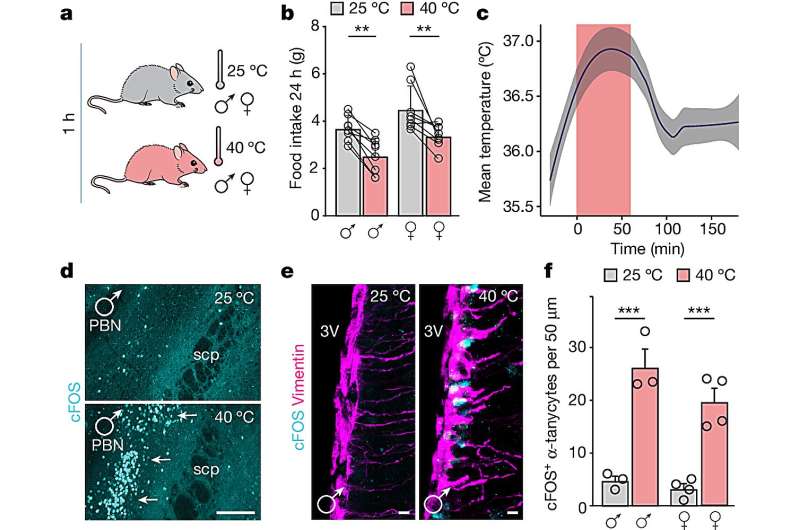
In a study recently published in Nature, an international research team led by Karolinska Institutet and MedUni Vienna, addressed how and why acute heat exposure, in conditions reminiscent of a sauna session or limited exposure to the sun, leads to reduced food intake.
“There is an increasing risk of obesity in society these days and understanding the mechanisms by which we can reduce this can benefit all individuals,” says Tibor Harkany, Professor at the Department of Neuroscience at Karolinska Institutet and MedUni Vienna’s Center for Brain Research, who led the study, in collaboration with Tamas L. Horvath from Yale University School of Medicine.
The study explores how our body responds to heat, and particularly at the level of food intake, and describes the neuronal signaling pathway that reduces feeding upon heat exposure. These findings not only explain some metabolic responses that more and more of us experience regularly but could also provide potential targets for the development of new treatments for metabolic disorders.
The study, performed in a mouse model, shows that the signaling cascade starts in the parabrachial nucleus, the “thermostat of the brain,” which is responsible for the primary sensing of temperature changes.
“We observed the activation of a group of specialized nerve cells in the brains of mice that were exposed to 40°C for one hour,” says Harkany.
The signaling pathway that they identified showed that the effect of heat does not influence the feeling of satiety as previously assumed. Rather, the release of a growth factor inhibits the activity of those neurons that would otherwise stimulate the search for and intake of food.
“By discovering the underlying neuronal circuit, we can advance basic research in this area,” says Harkany.
More information:
Marco Benevento et al, A brainstem–hypothalamus neuronal circuit reduces feeding upon heat exposure, Nature (2024). DOI: 10.1038/s41586-024-07232-3
Citation:
Unraveling the neural circuit behind reduced food intake in high temperatures (2024, April 23)
unraveling-neural-circuit-food-intake.html
.
. The content is provided for information purposes only.
